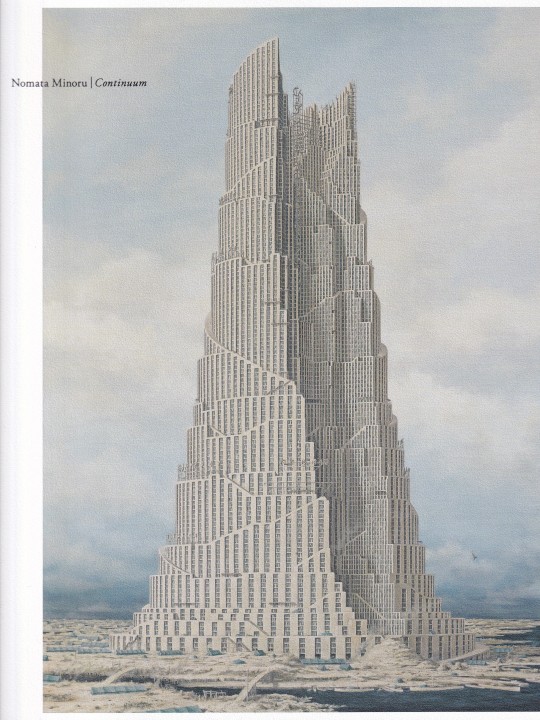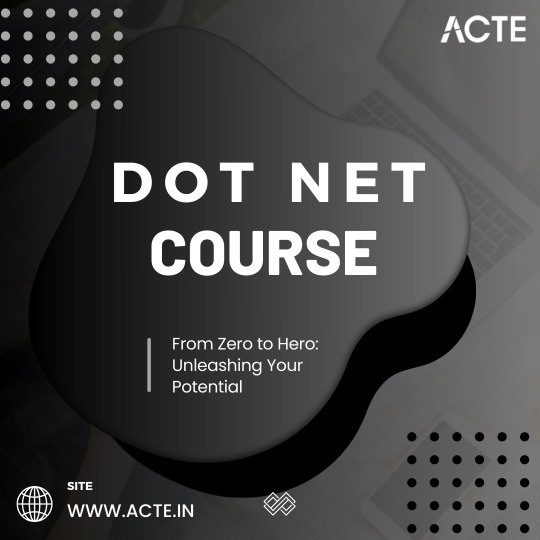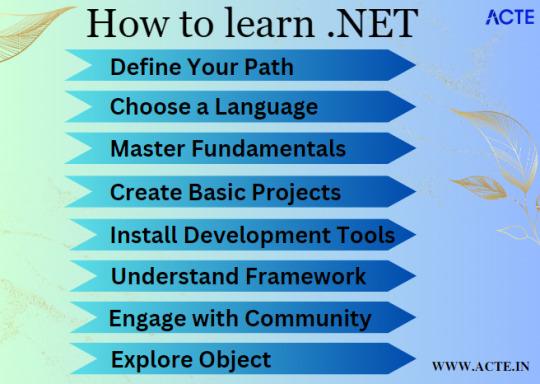#combination with .net framework
Explore tagged Tumblr posts
Text













Nomata Minoru / Continuum
Joseph Constable, Nomura Shino
Cooperation White Cube
limArt Co Ltd, Tokyo 2023, 182 pages, 22,5x28,5cm, ISBN 978-4-991313806
euro 52,00
email if you want to buy [email protected]
Over the past four decades, Minoru Nomata has developed a lexicon of imaginary architectonic and topographical forms to create paintings that transcend specifics of time and place. This book presents a grand overview of his visionary works, which combine the familiar with the mysterious and the heroic with the haunting. It is especially the forms of construction – structural beams, frameworks, tarpaulins, and netting – that are the hallmarks of these fantastical architectures. Notions of the picturesque and sublime combine in Nomata’s later paintings, where the structures seem increasingly fragile, with reduced material volume, greater height, or wrapped in tendril-like scaffolding.
20/02/24
#Minoru Namata#imaginary architectonic#topographical forms#art books#japanese artist#lim Art publisher#designbooksmilano#fashionbooksmilano
315 notes
·
View notes
Text
A political discourse thing that really annoys me is when the following happens:
Speaker: "I think X is good" Speaker's intended interpretation: "I think X, all else being equal, is a positive thing". For instance, if the speaker has a utilitarian moral framework or similar: "I think X contributes a positive term to the moral calculus a given situation". Interlocutor's interpretation: "[Speaker] thinks that all trade-offs which (according to [interlocutor]'s belief system) are required to produce the outcome X are justified". For instance, if the interlocutor has a utilitarian moral framework or similar: "[Speaker] thinks that the moral calculus in all or most situations in which X arises works out to be net positive".
Or even the less egregious case in which we have
Interlocutor's interpretation: "[Speaker] thinks that all trade-offs which (according to [speaker]'s belief system) are required to produce the outcome X are justified". For instance, if the interlocutor believes the speaker has a utilitarian moral framework or similar: "[Speaker] thinks that the moral calculus in all or most situations in which X arises works out to be net positive".
Obviously, the first scenario combines a failure of mind with a strawmanning tendency (interpreting [speaker] to be saying something stronger than they necessarily are, making them more likely to be wrong). The second scenario involves only the strawmanning tendency. Both of these are quite common and annoying as FUCK.
61 notes
·
View notes
Text
Understanding the Types of Literature Review: A Comprehensive Guide
Understanding types of literature review: A comprehensive guide.
Literature reviews are critical components of academic research that give an overview of the available knowledge relating to a particular topic. This helps to identify gaps, forms a basis for further research, and grounds the study on established theory and evidence. Literature reviews, however, do not fit in one single type. Rather they are of different types. Each depends on the purpose and approach of the research. Let's have a detailed view of the types of literature reviews. ### 1. Narrative Review
A narrative review, sometimes known as the traditional one, gives a general overview of research regarding a particular topic. It is descriptive and focuses on summarizing and synthesizing findings without much depth analysis.
Key Features:
Focuses on storytelling and descriptive summary. - Majorly used in fields such as humanities and social sciences.
Lacks a systematic methodology for selecting studies, which can lead to bias.
Purpose:
Narrative reviews are ideal for understanding a topic broadly and identifying general trends or patterns in the literature.
2. Systematic Review
A systematic review is a rigorous and structured approach to synthesizing research. It follows a predefined protocol to ensure transparency, reproducibility, and comprehensiveness.
Key Features:
Has explicit inclusion and exclusion criteria.
Is planned in databases systematically to find studies.
Keeps bias at a minimum by having a clear methodology.
Purpose:
Systematic reviews are applied to answer particular research questions, especially in fields like healthcare, psychology, and social sciences. Systematic reviews come with immense value because of their reliability and objectivity.
3. Meta-Analysis
A meta-analysis is a type of systematic review that pools data from many studies together using statistical methods to make their own synthesis, which tries to produce a quantitative overview of research findings.
Key Features:
Assumes all studies share similarities in methodology to compare them. - Offers results with statistical significance by combining data. - Is considered a demanding statistical process.
Meta-analyses are commonly used in medicine and psychology to determine the effectiveness of interventions or treatments. ***
4. Scoping Review
Scoping reviews are exploratory and aim to map the breadth and scope of research on a topic. Less focused on answering specific questions and more on identifying research gaps, they are considered exploratory. #### Key Features:
Wide inclusion criteria, casting a net to encompass all aspects of a topic. Does not critically evaluate the quality of included studies in depth. Often a precursor to a systematic review. #### Purpose:
Scoping reviews are suitable for nascent research areas or subjects where there are a few published studies to date.
5. Integrative Review
An integrative review combines qualitative and quantitative research to achieve a holistic understanding of the topic under review. * Key Features:
It integrates data based on diverse methodologies.
This integration encourages innovation.
It is useful in the development of theories or models * Purpose:
It is common to find such reviews in nursing, education, and healthcare research where mixed methods are often employed.
6. Critical Review
A critical review evaluates and critiques existing literature, often proposing new frameworks or perspectives.
Key Features:
Involves in-depth analysis and interpretation.
Challenges existing assumptions or theories.
Requires a strong theoretical foundation.
Purpose:
Critical reviews are ideal for advanced academic writing, such as dissertations and theoretical papers.
7. Theoretical Review
Theoretical reviews focus on examining theories related to a topic rather than empirical research.
Key Features:
Compares and contrasts different theoretical frameworks.
Identifies theoretical gaps.
Explores the evolution of ideas over time.
Purpose:
These reviews are often used in disciplines like sociology, philosophy, and psychology to refine or propose theoretical models.
8. Annotated Bibliography
A much simpler form of literature review is the annotated bibliography-an overview and critique of each source.
Key Features:
Lists sources with brief descriptions and critiques. Not synthesizing findings from the studies. Serves as a precursor to further developed reviews.
Purpose:
This type is commonly used for coursework or preliminary research to organize sources.
Conclusion
Each type of literature review has a specific purpose and is appropriate for a range of research objectives. Whether the use is about embracing broad trends in a narrative review or diving deep in statistical relationships as in meta-analysis, awareness of the types can guide you towards choosing the right approach for your study. The right type chosen ensures that your research not only becomes more robust but also relevant and impactful in its field. Mastering the art of literature review will keep researchers conversing effectively in the academic arenas while paving a way to make further discoveries.
Need expert guidance for your PhD, Master’s thesis, or research writing journey? Click the link below to access resources and support tailored to help you excel every step of the way. Unlock your full research potential today!

Follow us on Instagram: https://www.instagram.com/writebing/
#dissertation#phd student#thesis#phd life#grad school#phd research#exams#writingcitation#research#literature academia#english literature#literature quotes
13 notes
·
View notes
Quote
In fact, the notion that it’s imperative to increase the number of people in the world and that creating new lives is thus morally equivalent to preventing deaths is a key pillar of the techno-optimist worldview. This is the same formula by which Steven Pinker is able to declare that a world in which a growing absolute number of people face violence and starvation is nevertheless a desirable one as long as the proportion of such people in the overall population decreases—equivalent to claiming that a warlord who enslaves a hundred villagers but sires a thousand free children has made a net positive contribution to humanity. The presumption that perpetual population growth is self-evidently both desirable and inevitable, combined with a moral framework that assigns the same weight to potential lives as existing ones, results in a bizarre utilitarian calculus concluding that any action with the slightest chance of impacting the distant future carries a moral weight many magnitudes greater than any concern for the mere eight billion humans alive today. This conclusion forms the basis of longtermism—the L in TESCREAL.
Homo Algorithmicus
7 notes
·
View notes
Note
Any opinions on human domestication guide? I feel like some of the pieces for it might appeal to you with the whole yes kink no sex aspect of them
That's the, uhh, plant people domesticating humans setting, right? We aren't 100% familiar with it but we've seen enough to know that the narrative treatment is solidly... really, really not for us. Dan is more familiar with it than us, but from what we've seen, we're very inclined to just opt out of it - the narrative treatment of the actual domestication process treats it way too much like a good thing for us to be capable of being comfortable with it, and it has a sort of, like, lack of awareness of itself that throws it from "could be cool" solidly into squick territory.
Listen, we love a good bit of domestication and loss of autonomy, but the way that a lot of the narrative we've seen treats it is... awful, honestly, leaves us feeling like we need to get a good drink to get the taste of it out of our mouth, and it's not even something that we can fully verbalize because it's something in the higher framework and the treatment and execution of tropes that is really goddamn hard to explain without a five thousand word essay, and we don't want. To read enough of it to do that.
It feels bad to read. It is the unfortunate combination of "kink that's close enough to what we generally enjoy that it feels like something we should like but makes us want to cringe out of our skin in practice" that has gotten it and derivative works recommended to us and we just get immediately turned off by the narrative treatment. It's not... great. We are going to turn to Dan's opinion for this since we can't get past a few chapters on even derivative works and he has far more tolerance for this stuff.
It would be different if it had more of, the, like, self awareness of other works - the knowing of the author that what is being done is awful, even if the work itself takes place in a universe where that would not be a consideration. The first chapter's treatment of humanity is uncomfortable. The further treatment of humans and their domestication pushes that discomfort further, and it feels like the author thinks this domestication is a good thing - that it's a net gain for humanity to be enslaved. It treats it, narratively, like a utopia that people are resisting for no good reason, and that's...
There's a reason we prefer dark fiction over utopia, you know? The difference between a utopia book and a dystopia book, a lot of the time, is that the person writing the dystopia knows the world they're writing would be miserable to live in, and the person writing the utopia hasn't thought that their ideal world might be a nightmare for someone else. We can take a lot of very dark bullshit, but the moment that you lose that awareness that what's happening here is fucking terrible, you lose our... ability to engage with the work. Because if you, the author, aren't displaying that awareness, we can't keep with it. It's like how you can tell when an author doesn't view women as people, but with that view of... autonomy. The disabled. The way that cutting away any choice of how to live is seen as a mercy - and we know this may seem an extreme view of the subject matter presented, but we have seen these ways of thinking in people before, and a lot of those experiences have majorly affected our life.
We can see how someone would like it, if they had different experiences to us, if their brain worked a different way. Unfortunately, it makes us want to physically chew our arms off, and none of the narrative we've seen escapes that... pervasive, all-consuming thought, in the background, that you don't know yourself as well as someone else with a position of power over you. That if you gave up control, someone could make the decisions for you, and that would be good. That life is better when you have no say over what happens to your own body.
If it's something you like, we aren't going to yuck your yum. KINKTOMATO is a thing for a good reason, and you enjoying something is decidedly not our problem - we probably would legitimately never mention it if not specifically asked. But we quite value our bodily autonomy, and we have lived our life in a position where almost all of our problems have come from the fact that there are a lot of people who believe we don't have the capacity to properly make our own decisions, and we have had to battle that, tooth and claw, for years, and still, arguably, don't have all of our life in hand. It feels awful, it strikes on things we have personal experience with from an angle that feels like the author believes that it was stupid for us to attempt to fight people who had best intentions for us, even when "best intentions" can pave a road to hell worse than anything else you can imagine.
The sympathy in this narrative does not go to those who fight against domestication. In this setting, we are treated like a toddler fighting against what's best for us for wanting the right to choose what we do with our own body, and we cannot separate that underlying view from the story enough to enjoy it.
Also it doesn't have enough interesting spec bio for us to tolerate it sorry
#asks#we speak#negative chatter#we love a good loss of autonomy but like. please. for the love of god.#please stop treating it like in the narrative like its something youre stupid to avoid or not desire#we can taste the angle you have in this narrative and jesus fuck loss of autonomy is *not* a good thing across the board#the kink thing loss of control is mingling with some fucking weird societal views and it's been turning us off anything in the sphere#tldr if the narrative was not Like That we could probably enjoy it but we are in fact cognitively disabled and that affects our life#holding a big bright blaring sign that reads “HEY WE'RE DISABLED THIS SOUNDS LIKE A NIGHTMARE”#turns it over and it reads DO YOU KNOW HOW MANY HOOPS WE HAVE TO JUMP THROUGH BEFORE WE ARE CONSIDERED A PERSON#this feels very harsh to word out but like. we've dipped our toe. NOT OUR THING. we are hissing like a cat. please enjoy separate from us#thank you and hopefully our tone is not too blatantly abrasive. no thanks.
10 notes
·
View notes
Text
So I finally figured out something I've been noodling on for a while for my game: boons. i.e., additions to rolls based on advantageous situations and/or help from teammates - the equivalent mechanic to things like Guidance or Bless or Steady Aim from DnD.
(Of course, anyone who's familiar with DnD knows how pervasive "advantage" (i.e. rolling twice and taking the higher result) is as a mechanic, and the frustration with both a) how massive a boon advantage is and b) the fact that it doesn't stack from multiple sources (but also thank god it doesn't, given how big a boon it is). Pathfinder 2e counters this issue by making "fortune" and "misfortune" far rarer, and instead stingily giving +1s - but each +1 has a specific type, and bonuses of the same type can't stack. So we've traded more mathematical control for more bookkeeping. Understandable, still a bit annoying.)
What I've decided on is what I hope is an intuitive and effective middle ground: the first boon you receive grants you an additional d4 to your roll (which is always a d8 + your relevant attribute die, which will be anywhere between a d8 and a d20). A second boon to the same roll bumps that boon to a d6, a third bumps it to a d8, all the way to a maximum of a d12 (except in the rare circumstance of a "divine boon" - a god and a god alone could give you a bonus d20). "Banes" would be the opposite - one boon and one bane cancel out, but outside of evenness, it just ratchets up and down the die size depending on the number of boons and banes, up to a d12 subtracted from your roll if you have net 5 banes. One way or another, you'll never roll more than 3 dice for a given action.
I think this will prove far less onerous to keep track of than PF's circumstance/status/item/untyped bonuses, less crazy than DnD's advantage/disadvantage system, and in keeping with the "die ladder" framework governing much of the game. This also (in the case of boons, not banes) grants the player another opportunity for two dice to match - the "fortune effects" that occur when two dice match are a crucial element of the mechanics, and part of the "boon" a boon die grants you is more chances to match.
I'm really happy with this - I imagine it'll be difficult (especially at lower levels) to combine enough features and actions to actually get a d12 boon die - but that's a good thing; to be so thoroughly advantaged, everybody should be pouring all they've got into that action - but having 2 or 3 boons, or 2 boons and a bane, will probably be common enough to make this system pretty important to overall gameplay.
17 notes
·
View notes
Text
Alternatives to Capitalism
Identifying economic systems that may be considered better than capitalism depends on the criteria used for comparison, such as equity, sustainability, and overall societal well-being. Here are some alternative systems, each with its potential benefits and drawbacks:
1. Social Democracy
Description:
A political, social, and economic philosophy within a capitalist framework that emphasizes social justice, government intervention, and the welfare state.
Benefits:
Equity: Strong focus on reducing inequality through progressive taxation and wealth redistribution.
Welfare: Comprehensive social safety nets, including healthcare, education, and unemployment benefits.
Regulation: Strict regulations on businesses to protect workers, consumers, and the environment.
Drawbacks:
Economic Efficiency: Potentially higher taxes and regulation can impact business incentives and economic efficiency.
Government Size: Large government programs may lead to bureaucratic inefficiencies.
Examples:
Scandinavian countries like Sweden, Norway, and Denmark.
2. Democratic Socialism
Description:
A political philosophy that advocates for political democracy alongside social ownership of the means of production, extensive welfare programs, and economic planning.
Benefits:
Social Ownership: Emphasis on worker cooperatives and public ownership can lead to more equitable wealth distribution.
Democratic Control: Democratic decision-making processes in economic planning aim to meet the needs of the majority.
Social Welfare: Extensive welfare programs ensure basic needs are met for all citizens.
Drawbacks:
Economic Efficiency: May face challenges in innovation and efficiency due to reduced profit motives.
Implementation: Transitioning to this system can be difficult and disruptive.
Examples:
Elements found in policies proposed by some political parties and movements in various countries, though not fully implemented anywhere on a national scale.
3. Eco-Socialism
Description:
A blend of socialism and environmentalism, focusing on social ownership and ecological sustainability.
Benefits:
Sustainability: Prioritizes environmental health and sustainable development.
Social Equity: Combines social ownership with efforts to reduce inequality.
Community Focus: Emphasizes local, decentralized economies and participatory democracy.
Drawbacks:
Economic Growth: May limit economic growth due to stringent environmental regulations.
Scalability: Localized economies may struggle to scale and integrate into global markets.
Examples:
Green political movements and policies, though not fully implemented as a national system.
4. Participatory Economics (Parecon)
Description:
An economic system based on participatory decision-making, worker and consumer councils, and equitable distribution of resources.
Benefits:
Democracy: Emphasizes direct participation in economic decision-making.
Equity: Focus on equitable distribution of income and resources.
Efficiency: Aims to align production with social needs and reduce waste.
Drawbacks:
Complexity: Requires significant coordination and participation, which can be challenging on a large scale.
Transition: Moving from a capitalist system to Parecon would be complex and require significant societal changes.
Examples:
Theoretical and has not been implemented on a large scale, but certain cooperative movements and local experiments reflect its principles.
5. Commons-Based Peer Production
Description:
An economic system that emphasizes collaborative, decentralized production, often facilitated by digital platforms, and focuses on shared resources (the commons).
Benefits:
Innovation: Encourages open collaboration and innovation.
Sustainability: Reduces resource waste through shared use and collaborative consumption.
Empowerment: Empowers individuals and communities through direct participation and control over production.
Drawbacks:
Monetization: Can struggle with monetizing contributions and ensuring fair compensation.
Scalability: May face challenges in scaling beyond certain sectors, especially those not easily digitized.
Examples:
Open-source software projects, Wikipedia, and other collaborative platforms.
Conclusion
Each of these systems offers alternative approaches to address some of the shortcomings of capitalism, such as inequality, environmental harm, and exploitation. However, they also come with their own set of challenges and trade-offs. The best system may involve a hybrid approach, incorporating elements from various systems to balance economic efficiency, social equity, and environmental sustainability.
#philosophy#knowledge#learning#chatgpt#education#economics#capitalism#EconomicSystems#AlternativeEconomies#SocialDemocracy#DemocraticSocialism#EcoSocialism#ParticipatoryEconomics#CommonsBasedEconomy#SustainableEconomy#EquitableEconomy#EconomicInequality#SocialWelfare#WorkerCooperatives#EnvironmentalSustainability#ProgressiveTaxation#EconomicPlanning#GovernmentIntervention#SocialOwnership#EconomicInnovation#EconomicEfficiency#HybridEconomies
9 notes
·
View notes
Text
Building sustainable communities: The future of cities
What makes a city thrive is a combination of how developers create opportunities for movement, synergy, and prosperity. It’s a combination of celebrating life to its fullest capacity with the community at its very heart.
“At SM Prime (SMPHI), we dream big for our shared future. True prosperity transcends financial success. Our commitment to developing sustainable integrated properties is matched by our efforts to foster vibrant, inclusive communities wherever we build legacy properties that weather the challenges of time and that last for generations,” said Ms. Jessica Bianca Sy, Lead Executive for Design, Innovation and Strategy for SMPHI and SM Development Corporation (SMDC).

The 7th Annual Association of Pacific Rim Universities – Sustainable Cities and Landscapes Conference and Student Symposium 2024 (APRU-SCL 2024) Conference on Advancing Sustainable Cities and Communities through Science, Technology, and Innovations is hosted and organized this year by the University of the Philippines Los Baños (UPLB).
(L-R): Dr. Jennifer Marie S. Amparo, Dean, CHE, Dr. Jose V. Camacho, Jr. Chancellor, UPLB, Dr. Thomas Schneider, Chief Executive, APRU, Makati Mayor Hon. Abigail Binay, Ms. Jessica Bianca Sy, SMPHI and SMDC Lead Executive for Design, Innovation and Strategy, Dr. Edgar M. Reyes, Jr., Conference Director, ICHSPD, Assoc. Professor, UPLB, and Dr. Yekang Ko, Director, APRU-SCL, Assoc. Professor, University of Oregon.
Sy joins a list of esteemed local and international professors, climate specialists, and government officials at the 7th Annual Conference of the Association of Pacific Rim Universities – Sustainable Cities and Landscapes Conference and Student Symposium 2024 (APRU-SCL 2024).
The theme for this year’s three-day conference is Advancing Sustainable Cities and Communities through Science, Technology, and Innovation.
As one of Asia’s leading integrated property developers, SM Prime’s strong track record in sustainability and disaster resilience is central to the company’s projects. In a climate-vulnerable country like the Philippines, disaster preparedness and infrastructure resilience are priorities, with a goal to scale efforts to a city level.
The rapid city growth increases energy demand, necessitating innovative and efficient renewable energy solutions. SM Prime has partnered with franchise holders to systematically manage energy use and move towards net-zero emissions.
For future large-scale master planned developments, Sy shares that SM Prime is taking a systems approach to utility infrastructure down to embedding them in the urban design guidelines at the precinct or plot level developments.
“We are developing this living framework together with our knowledge partners. Currently the ambition is to combine our efforts and actionable items under six themes of – transport, energy, water, biodiversity, built form and materials,” she said.
Sy carries this clear vision to heart as an invaluable part of the path forward. “We believe this will be the future of cities in the Philippines and we are committed to delivering it to our future generations,” she said.
SM Prime remains committed to its role as a catalyst for economic growth, delivering innovative and sustainable lifestyle cities, thereby enriching the quality of life of millions of people. SM Prime is pursuing the next horizon on integrated property development and onward to building sustainable cities of the future. The 7th APRU-SCL 2024 is hosted and organized this year by the University of the Philippines Los Baňos, at the SMX Aura Convention Center, from August 6-8, 2024. For more information, email: [email protected] or visit the website: dcerp.che.uplb.edu.ph/ichspd.
3 notes
·
View notes
Text
hello codeblr more poc techniques this time it’s worms and spreading malware combined with the registry edit persistence technique!
https://github.com/peroxidee/gigas
using the .NET framework for obfuscation as well as ease of regedit access.
3 notes
·
View notes
Text
Dot Net Training 101: From Novice to Ninja - Level Up Your Coding Skills Today!
Are you a coding enthusiast looking to enhance your skills in the dynamic world of software development? Look no further! In this article, we will take you on an exciting journey from being a novice to becoming a coding ninja through comprehensive Dot Net training. Whether you're a beginner or have some programming experience, this guide will equip you with the knowledge and tools necessary to thrive in the field of IT.

Why Dot Net Training?
Bridging the Gap between Education and Industry Demands
One of the primary reasons to pursue Dot Net training is its high demand in the IT industry. With technological advancements progressing at an unprecedented pace, employers seek professionals well-versed in Dot Net technologies to meet their business needs. By acquiring Dot Net skills, you'll equip yourself with a valuable asset that can open doors to rewarding job opportunities.
Exploring the Versatility of Dot Net
Dot Net, a powerful framework developed by Microsoft, offers a wide range of tools and functionalities. From web development to desktop applications, mobile apps to cloud solutions, Dot Net empowers developers to craft robust and scalable software solutions. Through training, you'll gain the ability to leverage the versatility of Dot Net across various domains, expanding your horizons in the IT field.
Continuous Learning and Skill Growth
In the ever-evolving landscape of technology, it's crucial to stay up-to-date with the latest trends and advancements. Dot Net training provides an opportunity for continuous learning, allowing you to sharpen your coding skills and stay ahead in the competitive market. With regular updates and new features being added to the framework, embracing Dot Net training ensures that you're constantly equipped with the knowledge required to succeed.

Getting Started: Foundations of Dot Net
Understanding the Dot Net Framework
Before diving into the intricacies of Dot Net programming, it's essential to grasp the foundation of the Dot Net framework. Dot Net encompasses a collection of programming languages, libraries, and tools that provide a highly flexible and efficient environment for developing software applications. It simplifies the development process and enhances productivity by offering a unified platform to build, deploy, and run applications.
Mastering the C# Programming Language
C# (pronounced as "C sharp") is the primary programming language used in Dot Net development. Familiarizing yourself with C# is crucial for becoming a proficient Dot Net developer. C# combines the power of simplicity and versatility, making it an ideal language for developing various types of applications. Through structured learning and practice, you'll become adept at writing clean, efficient, and maintainable code using C#.
Navigating the Dot Net Ecosystem
To become a skilled Dot Net developer, you need to explore the vast ecosystem surrounding the framework. Discovering popular development environments like Visual Studio and Visual Studio Code can significantly enhance your productivity. Additionally, becoming well-versed in various Dot Net libraries and frameworks, such as ASP.NET for web development or Xamarin for cross-platform mobile development, opens doors to diverse career opportunities.
Leveling Up: Advanced Dot Net Concepts
Unlocking the Power of Object-Oriented Programming (OOP)
Mastering object-oriented programming is an essential milestone on your journey to becoming a Dot Net ninja. OOP helps in building modular, reusable, and structured code by organizing data and behavior into objects. Understanding and implementing OOP principles, such as encapsulation, inheritance, and polymorphism, will enable you to design scalable and maintainable software solutions.
Embracing Agile Development and Continuous Integration
In the fast-paced world of software development, it's crucial to adopt agile methodologies and embrace continuous integration. Agile practices ensure efficient collaboration, adaptability, and faster delivery of high-quality software. By familiarizing yourself with agile methodologies like Scrum or Kanban and incorporating continuous integration tools like Azure DevOps or Jenkins, you'll become an efficient and valued member of any development team.
Exploring Advanced Dot Net Technologies
As your Dot Net journey progresses, it's important to explore advanced technologies within the framework. Dive into topics such as ASP.NET Core for building modern web applications, WPF for creating rich desktop experiences, or Entity Framework for seamless database integration. By expanding your knowledge in these areas, you'll gain a competitive edge and the ability to tackle complex
By embarking on this path, you've taken the first step towards enhancing your coding skills and becoming a Dot Net ninja with ACTE Technologies. Keep in mind that practise and ongoing learning are the keys to success. Stay curious, embrace new technologies, and never stop leveling up your coding skills.
5 notes
·
View notes
Text
Microsoft Scrimble Framework also comes in like 3 different variants that have wildly varying interfaces based on if they're built for .NET, .NET core 2.0 or .NET core 2.1. Only the .NET core 2.1 version is available via nuget, the rest have to be compiled from some guy's fork of Microsoft's git repository (you can't use the original because it's been marked as an archive, and the Microsoft team has moved over to committing to that guy's fork instead).
You're also forgetting pysqueeb-it, an insane combination of python packages that's only distributed as a dockerfile and builds into a monolithic single-command docker entrypoint. Thankfully all of this is pulled for you when you try to build the docker image but unfortunately the package also requires Torch for some inexplicable reason (i guess we're squeebing with tensors now?) so get ready to wait for an hour while pip pulls that alongside the other 200 packages in requirements.txt. Make sure you install version==2.1.3 and replace the relevant lines in the .env file with your public keys before the build, otherwise you get to do all this again in 2 hours (being a docker build, pip can't cache packages so it's going to pull torch and everything else again every single time).
every software is like. your mission-critical app requires you to use the scrimble protocol to squeeb some snorble files for sprongle expressions. do you use:
libsnorble-2-dev, a C library that the author only distributes as source code and therefore must be compiled from source using CMake
Squeeb.js, which sort of has most of the features you want, but requires about a gigabyte of Node dependencies and has only been in development for eight months and has 4.7k open issues on Github
Squeeh.js, a typosquatting trojan that uses your GPU to mine crypto if you install it by mistake
Sprongloxide, a Rust crate beloved by its fanatical userbase, which has been in version 0.9.* for about four years, and is actually just a thin wrapper for libsnorble-2-dev
GNU Scrimble, a GPLv3-licensed command-line tool maintained by the Free Software Foundation, which has over a hundred different flags, and also comes with an integrated Lisp interpreter for scripting, and also a TUI-based Pong implementation as an "easter egg", and also supports CSV, XML, JSON, PDF, XLSX, and even HTML files, but does not actually come with support for squeebing snorble files for ideological reasons. it does have a boomeresque drawing of a grinning meerkat as its logo, though
Microsoft Scrimble Framework Core, a .NET library that has all the features you need and more, but costs $399 anually and comes with a proprietary licensing agreement that grants Microsoft the right to tattoo advertisements on the inside of your eyelids
snorblite, a full-featured Perl module which is entirely developed and maintained by a single guy who is completely insane and constantly makes blog posts about how much he hates the ATF and the "woke mind-virus", but everyone uses it because it has all the features you need and is distributed under the MIT license
Google Squeebular (deprecated since 2017)
7K notes
·
View notes
Text
Building GraphQL APIs with .NET and HotChocolate
Building GraphQL APIs with .NET and HotChocolate: Complete Developer Guide Modern GraphQL APIs are transforming how we architect scalable and maintainable GraphQL API with .NET and HotChocolate – into backend systems, and the .NET ecosystem is no exception. With HotChocolate, .NET developers gain a powerful, intuitive framework for building high-performance GraphQL APIs. This combination brings…
0 notes
Text
Transforming Emissions Management with Groundbreaking Methane Mitigation Techniques
A single methane leak from an abandoned well can release thousands of times more heat-trapping gas than a car running all day. As climate change becomes a central global concern, the role of methane in intensifying this crisis cannot be overstated. Reducing methane emissions is not only vital to slowing global warming but is one of the fastest, most cost-effective ways to make a near-term impact. This article explores how innovation in methane management—specifically through FullTerra Methane Mitigation—is shifting the trajectory of environmental responsibility.
THE IMPORTANCE OF ADVANCED METHANE MITIGATION
Methane, though less abundant in the atmosphere than carbon dioxide, is significantly more potent in its heat-trapping ability. Addressing these emissions is especially important in industries like oil and gas, agriculture, and landfills, where methane can easily escape into the atmosphere. FullTerra Methane Mitigation services are positioned as a critical solution in this scenario, offering precision tools and analytics that monitor, capture, and reduce methane leaks effectively. This proactive approach is redefining emission standards by focusing not just on reduction but on prevention and long-term sustainability, which is essential for protecting the environment.
TECHNOLOGY AND STRATEGY BEHIND MITIGATION
FullTerra Methane Mitigation is built upon an integrated platform that combines satellite data, ground sensors, and AI-powered analytics to detect and manage methane emissions before they escalate. The company’s cutting-edge solutions help industries quantify their environmental impact and stay compliant with ever-tightening regulations. Unlike traditional reactive methods, this system enables site-specific mitigation, making the entire process more efficient and results-driven. The technology also contributes to better decision-making and helps stakeholders track the long-term benefits of mitigation investments in a data-backed manner.
BEYOND METHANE: A WIDER ENVIRONMENTAL MISSION
While methane is a major focus, environmental degradation spans across air, water, and soil. This is where FullTerra environmental mitigation services play a crucial role. These services go beyond emissions control and aim to restore ecological balance by addressing multiple forms of environmental stress. From erosion control to habitat restoration and water quality improvement, the company’s comprehensive approach supports responsible development without compromising on sustainability. The increasing demand for such services reflects growing awareness and accountability among industries to reduce their environmental footprint.
SCALING SOLUTIONS FOR INDUSTRIAL IMPACT
Industries today face mounting pressure to meet sustainability targets while maintaining profitability. This is where FullTerra environmental mitigation services become valuable not just as regulatory compliance tools but as essential business enablers. These services are scalable and adaptable across different sectors, making it easier for industries to integrate environmental strategies into their operational frameworks. Companies adopting these services benefit from improved public trust, smoother project approvals, and long-term cost savings. The emphasis on customized solutions ensures that environmental goals are aligned with business needs.
LOOKING AHEAD TO A GREENER FUTURE
With environmental regulations expected to become stricter in the coming years, proactive mitigation strategies are not just preferable—they are inevitable. FullTerra environmental mitigation services help clients stay ahead of these regulations by building resilient ecosystems around their operations. As industries transition toward net-zero commitments and environmental, social, and governance (ESG) benchmarks, these services offer a practical pathway to reduce risk while enhancing sustainability. Long-term investments in environmental health are no longer seen as expenses but as strategic moves for business continuity and public credibility.
CONCLUSION: SETTING NEW STANDARDS IN ENVIRONMENTAL RESPONSIBILITY
As the world races to curb the effects of climate change, the need for effective methane and environmental mitigation strategies has never been more urgent. Companies looking to lead in this new era of environmental responsibility are turning to FullTerra for innovative and science-backed solutions. From reducing emissions to restoring ecosystems, the company is changing how businesses interact with the planet. For more information, visit and explore how FullTerra Methane Mitigation and FullTerra environmental mitigation services are shaping a cleaner, more sustainable future.
1 note
·
View note
Text
Best Software Development Company in Chennai | Leading Software Solutions

When searching for the best software development company in Chennai, businesses of all sizes look for a partner who combines technical expertise, a customer-centric approach, and proven delivery. A leading Software Development Company in Chennai offers end-to-end solutions—from ideation and design to development, testing, deployment, and maintenance—ensuring your software is scalable, secure, and aligned with your strategic goals.
Why Choose the Best Software Development Company in Chennai?
Local Expertise, Global Standards Chennai has emerged as a thriving IT hub, home to talented engineers fluent in cutting-edge technologies. By selecting the best software development company in Chennai, you tap into deep local expertise guided by global best practices, ensuring your project stays on time and within budget.
Proven Track Record The top Software Development Company in Chennai showcases a rich portfolio of successful projects across industries—finance, healthcare, e-commerce, education, and more. Their case studies demonstrate on-point requirements gathering, agile delivery, and robust support.
Cost-Effective Solutions Chennai offers competitive rates without compromising quality. The best software development company in Chennai provides flexible engagement models—fixed price, time & materials, or dedicated teams—so you can choose the structure that best fits your budget and timeline.
Cultural Alignment & Communication Teams in Chennai often work in overlapping time zones with North America, Europe, and Australia, enabling real-time collaboration. A leading Software Development Company in Chennai emphasizes transparent communication, regular status updates, and seamless integration with your in-house team.
Core Services Offered
A comprehensive Software Development Company in Chennai typically delivers:
Custom Software Development Tailor-made applications built from the ground up to address unique business challenges—whether it’s a CRM, ERP, inventory system, or specialized B2B software.
Mobile App Development Native and cross-platform iOS/Android apps designed for performance, usability, and engagement. Ideal for startups and enterprises aiming to reach customers on the go.
Web Application Development Responsive, SEO-friendly, and secure web apps using frameworks like React, Angular, and Vue.js, backed by scalable back-end systems in Node.js, .NET, Java, or Python.
UI/UX Design User-centered design that drives adoption. Wireframes, prototypes, and high-fidelity designs ensure an intuitive interface that delights end users.
Quality Assurance & Testing Automated and manual testing—functional, performance, security, and usability—to deliver a bug-free product that scales under real-world conditions.
DevOps & Cloud Services CI/CD pipelines, containerization with Docker/Kubernetes, and deployments on AWS, Azure, or Google Cloud for high availability and rapid release cycles.
Maintenance & Support Post-launch monitoring, feature enhancements, and 24/7 support to keep your software running smoothly and securely.
The Development Process
Discovery & Planning Workshops and stakeholder interviews to define scope, objectives, and success metrics.
Design & Prototyping Rapid prototyping of wireframes and UI mockups for early feedback and iterative refinement.
Agile Development Two-week sprints with sprint demos, ensuring transparency and adaptability to changing requirements.
Testing & QA Continuous testing throughout development to catch issues early and deliver a stable release.
Deployment & Go-Live Seamless rollout with thorough planning, user training, and post-deployment support.
Maintenance & Evolution Ongoing enhancements, performance tuning, and security updates to keep your application competitive.
Benefits of Partnering Locally
Speedy Onboarding: Proximity to Chennai’s tech ecosystem speeds up recruitment of additional talent.
Cultural Synergy: Shared cultural context helps in understanding your business nuances faster.
Time-Zone Overlap: Real-time collaboration during key business hours reduces turnaround times.
Networking & Events: Access to local tech meetups, hackathons, and startup incubators for continuous innovation.
Conclusion
Choosing the best software development company in Chennai means entrusting your digital transformation to a partner with deep technical skills, transparent processes, and a client-first ethos. Whether you’re a startup looking to disrupt the market or a large enterprise aiming to modernize legacy systems, the right Software Development Company in Chennai will guide you from concept to success—delivering high-quality software on schedule and within budget. Start your journey today and experience why Chennai stands out as a premier destination for software development excellence.
0 notes
Text
Find the Top 5 Latest Mobile App Development Software in 2025 — Expert Picks by TimD — Tim Digital
Choosing the right mobile app development software in 2025 is more than just a technical decision — it’s a strategic advantage. With the growing pressure to deliver faster, reduce bugs, and maintain UI consistency across devices, developers and companies alike are re-evaluating their tech stacks.

Why the Right Mobile Development Stack Makes All the Difference
Many development teams struggle not because of a lack of skill but due to poor tooling and platform fragmentation. Common issues include:
Too much time spent on duplicate codebases
Difficulty managing bugs across platforms
Low design consistency between iOS and Android versions
A better stack can lead to faster time-to-market, fewer bugs, and improved collaboration across teams.
Snapshot: 5 Game-Changing Mobile Development Frameworks
In 2025, five standout mobile development frameworks are leading the way.
Flutter, backed by Google, offers hot reload, expressive visuals, and UI consistency — making it ideal for cross-platform UI precision. React Native, developed by Meta, is JS/TS-based and features fast refresh and a robust plugin ecosystem, best suited for teams transitioning from web to mobile. .NET MAUI, Microsoft’s enterprise-grade solution, combines native speed with C# and deep integration into the Microsoft ecosystem, perfect for unified experiences across mobile and desktop. For Apple-centric development, Swift stands out with hardware-level API access and deep iOS integration, delivering high-performance, iOS-only applications. Lastly, Kotlin, Google’s preferred language for Android, is known for its concise syntax and Jetpack Compose support, making it the go-to choice for scalable, Android-first projects.
1. Flutter — Deliver Visually Consistent Cross-Platform Apps
Backed by Google, Flutter continues to lead the way for teams needing high-performance mobile apps from a single Dart codebase. With its built-in Skia rendering engine, it doesn’t rely on native UI components — giving you full control over visuals on both Android and iOS.
Why It’s a Top Pick:
Rapid UI iteration with Hot Reload
Mature ecosystem on pub.dev
Excellent for MVPs, startups, and custom-designed apps
2. React Native — A Natural Fit for Web Development Teams
Created by Meta, React Native allows JavaScript developers to build native mobile apps without switching tech stacks. It’s ideal for web teams transitioning into mobile, especially with tools like Expo simplifying builds.
Best Use Cases:
Fast deployment using React-based components
Shared codebase between web and mobile
Lightweight apps needing high iteration cycles
3. .NET MAUI — Microsoft’s Unified Solution for Desktop and Mobile
.NET MAUI enables enterprise-grade cross-platform development using C# and XAML. It compiles to native code, ensuring performance, while simplifying development for organizations already using Microsoft tools and Azure.
Why Enterprises Prefer It:
Strong support for desktop/mobile hybrid builds
Full access to native APIs
Streamlined with Visual Studio and Azure DevOps
4. Swift — The Gold Standard for Native iOS App Development
Developed by Apple, Swift is the go-to for building fluid, fast, and fully integrated iOS apps. Combined with SwiftUI or UIKit, it’s the most reliable way to deliver App Store-ready applications with deep device capabilities.
Ideal For:
iOS-only apps
Products that leverage ARKit, Core ML, or HealthKit
Premium apps requiring pixel-perfect animations
5. Kotlin — For Next-Level Native Android Performance
Endorsed by Google and developed by JetBrains, Kotlin is a modern language designed for Android. It brings null safety, concise syntax, and coroutine-based async capabilities, making it a favorite among Android developers in 2025.
Where It Shines:
Clean migration path from Java
Jetpack Compose support for UI innovation
Great for complex, scalable Android apps
Native vs. Cross-Platform vs. Hybrid — What Should You Choose?
When it comes to choosing the right development approach, your decision should align with your product roadmap, team capabilities, and performance expectations. Native development offers the best UX quality and strong scalability, making it ideal for performance-intensive apps — but it comes with higher maintenance needs and moderate development speed. Cross-platform frameworks like Flutter and React Native strike a balance by allowing faster development, lower maintenance, and good scalability, although UX quality may slightly lag behind native builds. On the other hand, hybrid frameworks such as Ionic are fast to develop and easy to maintain but offer limited user experience and only moderate scalability — making them suitable for basic MVPs or internal tools where performance is not critical.
Expert Tip: If your app relies on camera, AR, or sensors — go native. For time-to-market and design parity, cross-platform tools like Flutter or React Native offer the best ROI.
What to Look for in Mobile App Development Platforms
When selecting mobile development tools in 2025, top agencies and development teams recommend looking for:
Real-time debugging and emulation support
Comprehensive UI libraries
CI/CD compatibility (e.g., App Center, GitHub Actions)
Easy deployment to Play Store and App Store
Third-party plugin support for maps, payments, authentication, etc.
Final Thoughts
Whether you’re launching a feature-rich Android app, building an enterprise mobile suite, or rapidly shipping a cross-platform MVP — choosing the right development platform in 2025 is key to avoiding unnecessary rework and scaling with confidence.
If you’re looking for expert guidance, several agencies — like TimD — Tim Digital — are offering tailored consulting and mobile app solutions built on the most robust tools in the market.
👉 Looking for the Best Mobile Apps Development Services in Kolkata? Explore trusted mobile development experts who can help architect your next big idea, fast and friction-free.
Follow us for insights and expert strategies on LinkedIn, Facebook, Instagram, YouTube, Pinterest, and Twitter (X).
#MobileAppDevelopment#AppDevelopmentTools#CrossPlatformDevelopment#FlutterDevelopment#SwiftProgramming#KotlinAndroid#DotNetMAUI#iOSDevelopment#AndroidDevelopment#TechStack2025#TimDigital#TimDTech#SoftwareDevelopment
0 notes
Text
Solar Collector Market: Key Growth Drivers Powering the Global Expansion of the Sector Today

Solar Collector Market Drivers
Government Support and Renewable Energy Policies
Governments across the world are increasingly implementing favorable policies and mandates to promote the adoption of renewable energy sources, including solar thermal systems. Regulatory frameworks such as tax incentives, subsidies, rebates, feed-in tariffs, and zero-emission goals are among the top drivers pushing the solar collector market forward. Countries like India and China have actively integrated solar energy into their national energy strategies. In Europe, Renewable Heat Incentive (RHI) schemes and Solar District Heating (SDH) programs continue to incentivize residential and industrial installations of solar collectors. This policy-driven environment enhances affordability and encourages large-scale investments in solar thermal technologies.
Environmental and Climate Change Concerns
With the rising urgency to mitigate climate change and reduce carbon emissions, solar collectors are gaining traction as an eco-friendly alternative to traditional fossil fuel-based heating systems. Solar collectors produce zero-emission heat, making them a preferred solution in both residential and commercial settings. As global organizations and governments commit to achieving net-zero carbon goals, the demand for solar thermal technologies is set to rise significantly.
Advancements in Solar Thermal Technology
Technological innovations are playing a crucial role in enhancing the performance, reliability, and affordability of solar collectors. Notable advancements include:
Evacuated Tube Collectors: Offer high efficiency even in colder and cloudier climates.
Concentrating Solar Collectors: Used for industrial high-temperature processes and capable of delivering more focused heat.
Hybrid Systems: Photovoltaic-Thermal (PVT) collectors combine electricity and heat generation in one system.
Smart Controllers and IoT Integration: Enable real-time monitoring and operational optimization.
Nanotechnology: Nanofluids and advanced coatings are being developed to improve heat transfer efficiency and thermal absorption.
These innovations are not only reducing costs but also expanding the application range of solar thermal systems across different sectors.
Cost Decline and Improved ROI
One of the most significant drivers of solar collector adoption is the substantial reduction in overall system costs. Advances in manufacturing, increased competition, and economies of scale have brought down the prices of solar components, including collectors, mounting systems, and thermal storage. As a result, the return on investment (ROI) has improved, particularly for commercial and industrial users. These cost reductions have helped solar collectors become a more economically viable solution in both developed and emerging markets.
Growing Demand for Industrial Process Heat
Industries such as food processing, pharmaceuticals, textiles, chemicals, and pulp & paper require large volumes of thermal energy for processes such as drying, pasteurization, and sterilization. The use of solar collectors for industrial process heat (IPH) is rapidly gaining momentum, especially as companies aim to reduce their carbon footprint and improve sustainability metrics. Governments are also encouraging this transition by offering grants and low-interest loans for solar heat installations in the industrial sector.
Energy Security and Independence
The volatility of fossil fuel prices and the need for energy security have prompted governments and businesses to diversify their energy sources. Solar thermal systems offer a decentralized, reliable, and renewable heat source that helps reduce dependence on imported fuels. In regions with less reliable electricity infrastructure, solar collectors provide a practical and independent solution for hot water and space heating.
Smart City Initiatives and Urban Growth
Urbanization and the rise of smart cities have created a fertile environment for the integration of energy-efficient and environmentally friendly technologies. Solar collectors are increasingly being incorporated into municipal buildings, hospitals, schools, and district heating networks as part of broader sustainable infrastructure programs. These systems help cities reduce operating costs, lower emissions, and promote clean energy usage.
Strong Market Growth in Developing Regions
While mature markets in North America and Europe continue to invest in high-performance solar thermal systems, developing regions in Asia-Pacific, Latin America, the Middle East, and Africa are emerging as high-potential growth markets. High solar irradiance, growing energy demand, and increasing awareness of renewable energy benefits are driving adoption in these areas. Additionally, international collaborations and financing programs are supporting solar collector deployment in remote and off-grid communities.
Opportunities on the Horizon
Future market opportunities include:
Hybrid Integration: Combining solar collectors with biomass or heat pumps to provide continuous heating.
Thermal Storage: Innovations in thermal batteries and storage tanks are enabling energy use during non-sunny hours.
District Heating Expansion: Using centralized solar thermal plants to provide heating for residential complexes and towns.
Commercial Applications: Hotels, spas, and healthcare facilities are investing in solar hot water systems to reduce operational costs.
Conclusion
The solar collector market is experiencing strong momentum, fueled by favorable government policies, environmental concerns, technological advancements, and the falling cost of implementation. As industries seek sustainable heat solutions and households pursue energy independence, solar thermal systems are becoming increasingly popular. However, challenges such as intermittency, high upfront costs, and competition from photovoltaic systems must still be addressed. Moving forward, companies that innovate in hybrid systems, storage solutions, and cost-efficient designs will be best positioned to capture growth in the evolving global solar collector market.
0 notes